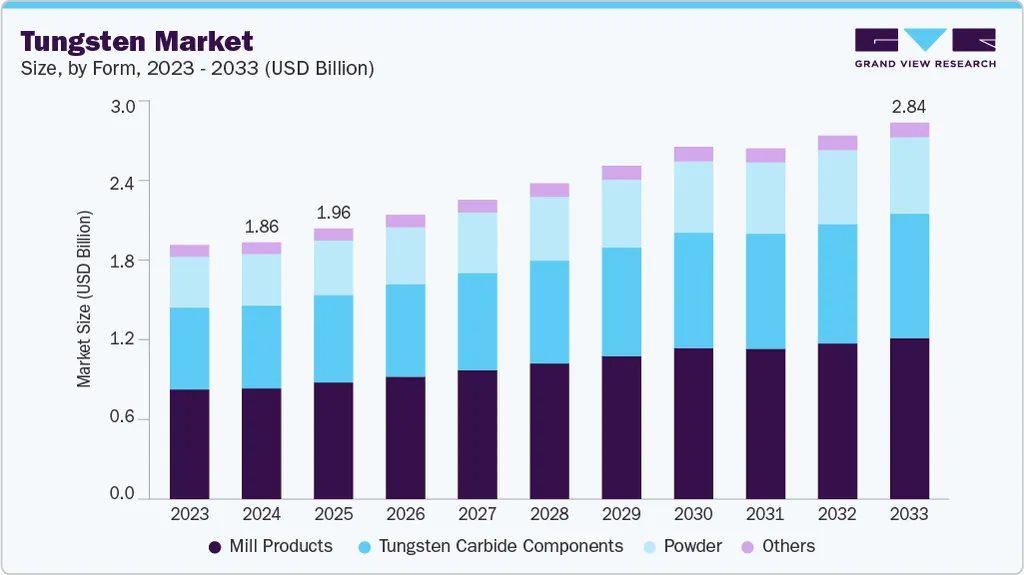Tungsten, often called “industrial steel” for its unparalleled strength and heat resistance, has emerged as one of the most strategically vital metals in today’s industrial landscape. Its exceptional properties—including the highest melting point of any metal at 3,422°C, remarkable density, and superior hardness—make it indispensable across defense, technology, manufacturing, and energy sectors. As global demand surges and supply faces constraints, companies positioned to deliver conflict-free tungsten from stable jurisdictions are capturing significant market attention.
Tungsten’s critical role spans multiple high-value applications. In defense, it is essential for components in missiles, aircraft, armor-piercing ammunition, and bulletproof shields. The electric vehicle sector increasingly incorporates tungsten components for advanced battery technologies, while semiconductor manufacturing relies on tungsten hexafluoride gas to achieve the processing speeds required for AI development. Industrial tools, such as cutting tools, drill bits, and mining equipment, depend on tungsten carbide for extreme durability. Aerospace technology also benefits from tungsten’s unique properties, particularly in heat-resistant components for spacecraft and aviation systems.
“The combination of tungsten’s physical properties makes it virtually irreplaceable in certain critical applications,” notes a recent SkyQuest Technology market report. “As technological advancement continues across sectors, demand for this strategic metal continues to outpace available supply.”
The global tungsten market, currently valued at approximately US$5.5 billion, is projected to more than double to US$10.26 billion by 2032, representing a compound annual growth rate of 8%. This robust growth trajectory reflects tungsten’s expanding applications across emerging technologies and traditional sectors. Market analysts point to several factors driving this growth: expanding defense budgets globally, technology sector innovations, industrial manufacturing recovery, and the growth of electric vehicle production.
However, the tungsten supply chain faces significant challenges that are reshaping the global mining landscape. China controls over 80% of primary tungsten production and has implemented export controls on tungsten and other critical minerals. Only about 13% of global tungsten comes from regions considered politically stable and conflict-free, according to the U.S. Geological Survey. Additionally, new tungsten mines face lengthy development timelines, with only two projects recently entering or approaching production globally—the Boguty mine in Kazakhstan (2024) and the Sangdong mine in South Korea (H2 2025).
“The development of new tungsten mines occurs at a glacial pace,” states an analysis from Discovery Alert. “This creates a persistent supply bottleneck that benefits established producers with operational mines and advanced development projects.”
Geopolitical factors are also driving market transformation. Beginning January 2027, the U.S. military will ban purchases of minerals from China, Russia, Iran, and North Korea. Recent U.S. executive orders aim to fast-track critical mineral production domestically, while unprecedented increases in global military expenditure, particularly in Europe and the Middle East, are driving demand for tungsten-based military applications.
The convergence of rising demand and constrained supply has created a bullish pricing environment for tungsten. Prices have more than doubled from approximately US$200 per metric ton unit (MTU) in 2020 to nearly US$500 currently, according to Fastmarkets data. Market analysts anticipate sustained price support due to structural supply constraints, with tungsten oxide trading at approximately US$42,000 per ton according to Shanghai Metals Market data.
Almonty Industries has strategically positioned itself to become the dominant Western tungsten supplier through its portfolio of high-quality assets. The company’s strategic asset portfolio includes the Sangdong Mine in South Korea, one of the world’s largest and highest-grade tungsten deposits, and the Panasqueira Mine in Portugal, a century-old producing mine with premium-quality tungsten concentrate. Additionally, Almonty has development projects in Spain, including Los Santos and Valtreixal, providing additional growth potential.
The Sangdong mine represents one of the most significant tungsten projects globally, with exceptional resource base, projected low-quartile production costs, and a mine life of over 45 years at full production capacity. Almonty has secured long-term offtake agreements, including a 15-year agreement with Plansee Group and Global Tungsten and Powders, covering phase-I production with a price floor of US$235 per MTU, and a supply agreement with Metal Tech and Tungsten Parts Wyoming, providing at least 40 metric tons of tungsten oxide monthly to U.S. and allied defense industries.
Almonty is executing a phased development approach at Sangdong, with Phase I (H2 2025) ramping up to 640,000 tons processing capacity and 230,000 MTU output, and Phase II (2026-2027) expanding to 1.2 million tons per year processing capacity

